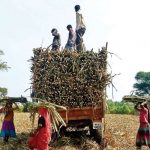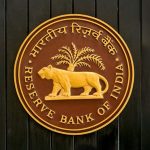In 1747, German chemist, Andreas Marggraf discovered that the sugar in a sugar beet is identical to that in sugarcane.
Sugar was first produced from sugarcane plants in northern India sometime after the first century CE. The derivation of the word “sugar” is thought to be from Sanskrit शर्करा (śarkarā), meaning “ground or candied sugar,” originally “grit, gravel”.
Sugar is made from sugarcane & was discovered thousands of years ago in New Guinea. And then the route was traced to India & South Asia. India was the first to begin with sugar production following the process of pressuring sugarcane to extract juice & boil it to get crystals. Originally, people chewed sugarcane raw to extract its sweetness. Indians discovered how to crystallize sugar during the Gupta dynasty, around 350 AD.
The government of India in 1950-51 made serious industrial development plans & had set many targets for production & consumption of sugar. These plans by the government projected the license & installment capacity for the sugar industry in its Five Year Plans. India is well known as the original home of sugar & sugarcane.
Indian mythology supports the fact it contains legends showing the origin of sugarcane. Today India is the second largest producer of sugarcane next to Brazil. Currently, there are about 4 million hectares of land under sugarcane with an average yield of 70 tonnes per hectare.
India is the largest producer of sugar including traditional cane sugar sweeteners, khandsari & Gur equivalent to 26 million tonnes raw value followed by Brazil in second place at 18.5 million tonnes. Even for white crystal sugar, India has ranked No.1 position in 7 out of the last 10 years.
The traditional sweeteners of India like Gur & Khandsari are consumed mostly by the rural population in the country. In the early 1930’s nearly 2/3rd of the sugarcane production was used for the production of alternate sweeteners like Gur & Khandsari. Accordingly, because of the better standard of living & higher incomes, the sweetener demand has shifted to white sugar. Currently, 1/3rd of sugarcane production is used by the Gur & Khandsari sectors.
In the year 1930, there was the advent of the modern sugar processing industry in India which was started with the grant of tariff protection to the sugar industry. In the year 1930-31, the number of sugar mills increased from 30 to 135 and in the year 1935-36 production increased from 1.20 lakh tonnes to 9.34 lakh tonnes under the dynamic leadership of the private sector. In the year 1950-51, the era of planning for industrial development began The government laid down targets of sugar production & consumption, licensed & installed capacity, and sugarcane production during each of the Five Year Plan periods.
The sugar industry in the first five-year plan, beginning in 1951, was watching the Government announce incentives and lay clear policies for the industry. The sugar industry was in a ready state to take off subject to the ‘Government announcing its plans favoring the industry. The industry was seeking policy directions on licensing and location of the new industries and also for the location of the Khandsari plants within certain distances from the existing sugar factories. The Government of India planned the industrial development by enacting the Industries (Development 6. Regulations) Act 1951 as amended in 1956. The Government also announced its new licensing policy in 1954 which gave a positive boost to the sugar industry.
The main features of the new policy were primarily aimed at providing all the facilities to the sugar industry to promote its development and more so the intention was to develop the industry in the tropical belt.







